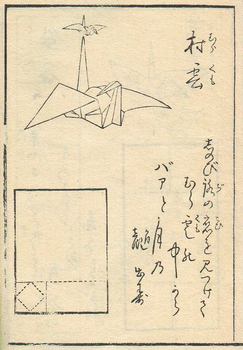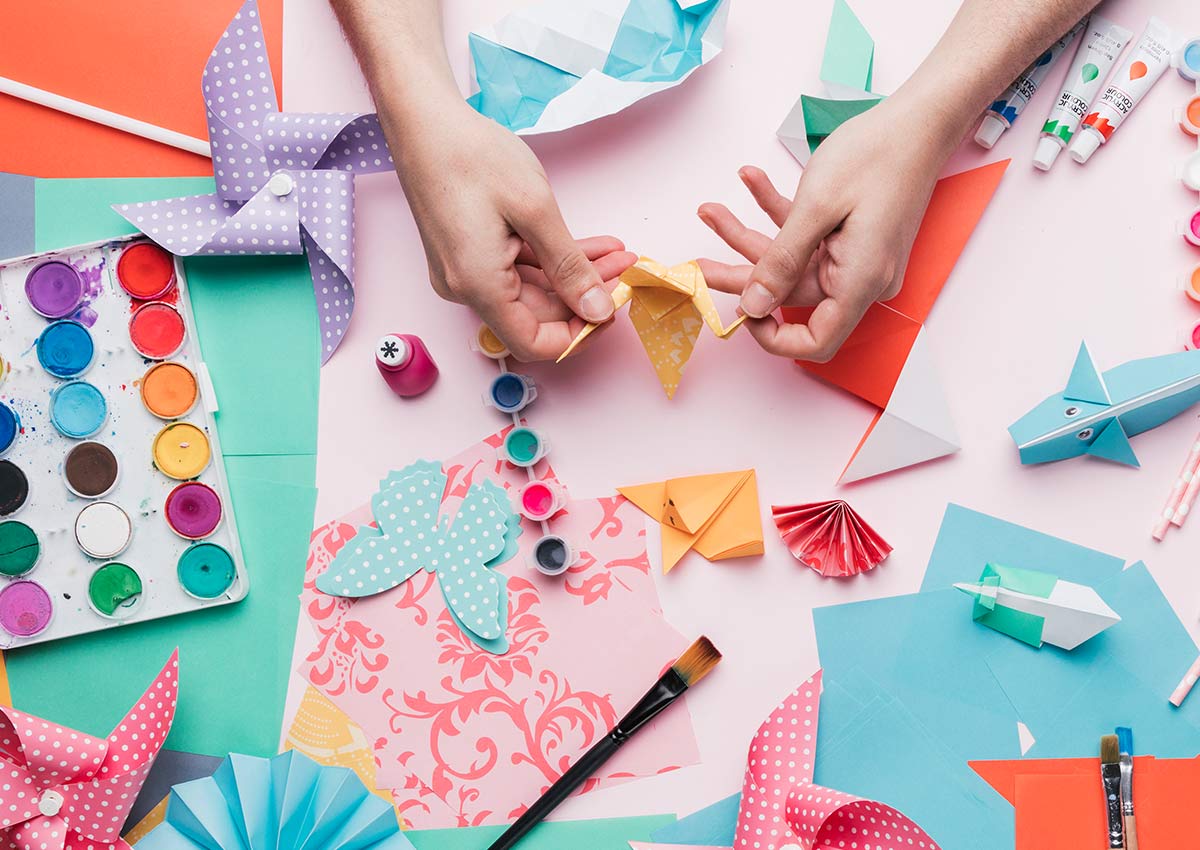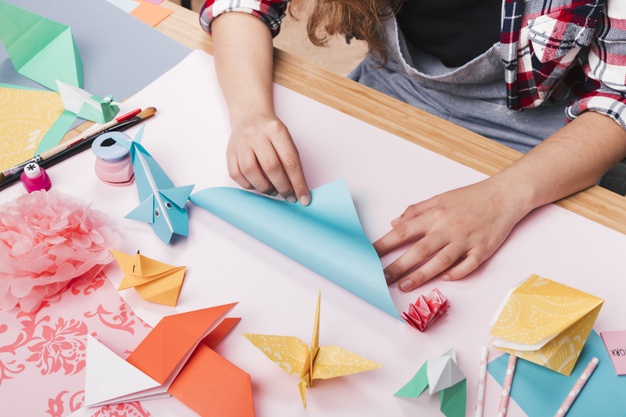What is origami?
Origami (折り紙, Japanese pronunciation: [oɾiɡami] or [oɾiꜜɡami], from ori meaning "folding", and kami meaning "paper" (kami changes to gami due to rendaku)) is the art of paper folding, which is often associated with Japanese culture. In modern usage, the word "origami" is used as an inclusive term for all folding practices, regardless of their culture of origin.
The goal is to transform a flat square sheet of paper into a finished sculpture through folding and sculpting techniques. Modern origami practitioners generally discourage the use of cuts, glue, or markings on the paper. Origami folders often use the Japanese word kirigami to refer to designs which use cuts. The small number of basic origami folds can be combined in a variety of ways to make intricate designs. The best-known origami model is the Japanese paper crane. In general, these designs begin with a square sheet of paper whose sides may be of different colors, prints, or patterns. Traditional Japanese origami, which has been practiced since the Edo period (1603–1867), has often been less strict about these conventions, sometimes cutting the paper or using nonsquare shapes to start with. The principles of origami are also used in stents, packaging, and other engineering applications

History
Distinct paperfolding traditions arose in Europe, China, and Japan which have been well-documented by historians. These seem to have been mostly separate traditions, until the 20th century. In China, traditional funerals often include the burning of folded paper, most often representations of gold nuggets (yuanbao). The practice of burning paper representations instead of full-scale wood or clay replicas dates from the Song Dynasty (905–1125 CE), though it is not clear how much folding was involved.
In Japan, the earliest unambiguous reference to a paper model is in a short poem by Ihara Saikaku in 1680 which mentions a traditional butterfly design used during Shinto weddings. Folding filled some ceremonial functions in Edo period Japanese culture; noshi were attached to gifts, much like greeting cards are used today. This developed into a form of entertainment; the first two instructional books published in Japan are clearly recreational. In Europe, there was a well-developed genre of napkin folding, which flourished during the 17th and 18th centuries. After this period, this genre declined and was mostly forgotten; historian Joan Sallas attributes this to the introduction of porcelain, which replaced complex napkin folds as a dinner-table status symbol among nobility.[5] However, some of the techniques and bases associated with this tradition continued to be a part of European culture; folding was a significant part of Friedrich Froebel's "Kindergarten" method, and the designs published in connection with his curriculum are stylistically similar to the napkin fold repertoire. Another example of early origami in Europe is the "parajita," a stylized bird whose origins date from at least the nineteenth century.German educator Friedrich Froebel (1782–1852), inventor of the kindergarten, was an avid proponent of paper folding and its educational benefits, and he helped to spread paper folding around the world. Three basic types of folds are associated with him: the Folds of Life (basic folds that introduced kids to paper folding), the Folds of Truth (teaching basic principles of geometry), and the Folds of Beauty (more-advanced folds based on squares, hexagons, and octagons); the famed folded and woven paper Froebel star, a popular Christmas craft and decoration, was named after him but was likely invented by someone else. About 1880 those Froebelian folds were introduced into Japan and Japanese schools, and it was about that time that the word origami began to be used to describe recreational folding. German contributions to paper folding continued with Rudolf Steiner’s first Waldorf school (1919), in Stuttgart, Germany, which emphasized assorted hands-on activities including origami, and with the Bauhaus school of design (1919–33). Bauhaus used paper folding as a means of training students in commercial design, and revered Bauhaus teacher and artist Josef Albers was especially adept at creating dome-shaped structures from flat sheets of paper.


Techniques
Many origami books begin with a description of basic origami techniques which are used to construct the models. This includes simple diagrams of basic folds like valley and mountain folds, pleats, reverse folds, squash folds, and sinks. There are also standard named bases which are used in a wide variety of models, for instance the bird base is an intermediate stage in the construction of the flapping bird. Additional bases are the preliminary base (square base), fish base, waterbomb base, and the frog base.
